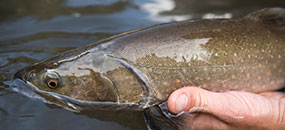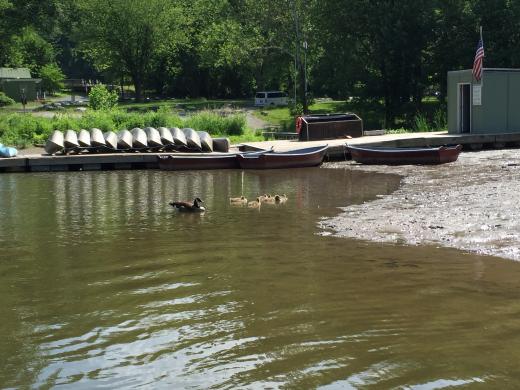I was fishing on the Potomac River this morning while downstream on the banks of the Anacostia, a tributary of the Potomac, EPA and the Corps of Engineers announced they were restoring the protections of the Clean Water Act to small headwater streams. A series of warm days has all but ended the shad bite, but it was still fun to share the water with defensive geese minding their goslings. I saw a juvenile bald eagle lumber off with a fish in its talons, and had a gar break me off. It was a great morning.
For most people, federal regulations are somewhat removed from their day to day life. But for those of us who fish or otherwise care about clean water, this is a really important day. I fish the Potomac or its tributaries at least 90 times a year. I take my kids with me as often as I can. We are lucky enough to have land along the Little Cacapon River in West Virginia—a tributary of the Potomac—and my boys and I swim, fish, and hunt in, and along it. The Potomac is the drinking water supply for the city of Washington DC, and dozens of other communities.
The Potomac is the same river that my father described as a “dirty, smelly cesspool” that “people stayed away from so they wouldn’t get sick” when he was at Georgetown in the 1960s. What happened to the Potomac watershed in the intervening 50 years? Two things. First, the Clean Water Act prohibited the dumping of chemicals and other pollutants directly in the river. Second, the Clean Water Act required people who wanted to develop seasonal streams such as the Little Cacapon to get a permit before doing so.
Two Supreme Court decisions in the 2000s threw 30 years of logic out the window when the court said that the Clean Water Act might not apply to the Little Cacapon and the other 60 percent of stream miles in the United States that may run dry during certain times of the year.
Every angler knows that small intermittent or ephemeral streams are hugely important as sources of clean drinking water and as spawning and rearing habitat for fish. The Supreme Court ruled that if the Clean Water Act was to apply to headwater streams, then the federal government had to go back and describe the “significant nexus” between headwater streams and downstream navigable waterways.
So, the government conducted an extensive peer review on the topic and found, not surprisingly, that gravity works cheap and never takes a day off. Of course, headwater streams such as the Little Cacapon are important to larger downstream rivers such as the Potomac.
Today’s regulation reapplies the protections of the Clean Water Act to small headwater streams. If you fish, swim, or otherwise care about clean water, please tell your Member of Congress to support protecting small streams that grow big fish.






